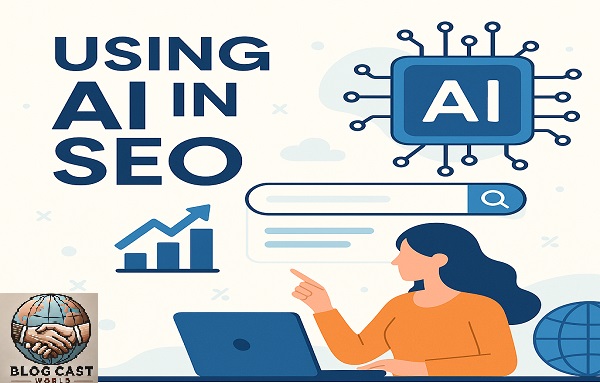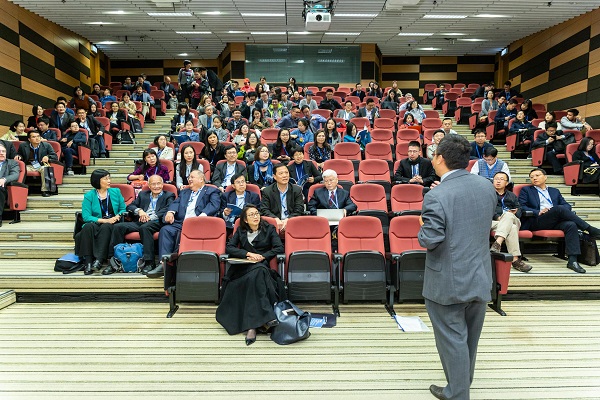SEO stands for Search Engine Optimization. As we are aware of increasing reach of Artificial Intelligence (AI) in almost every type of work and also reflecting the job scenario. So, SEO can’t be left behind. AI is also making a strong impact on SEO by making it faster, smarter, and more effective. With the use of AI for SEO one can analyze data, optimize content, help to drive more traffic for website and also helps to improve the rankings of keywords.
Step by step process on using AI for SEO to increase your website’s traffic and rankings
Step 1: Use of AI in Keyword Research
Keywords are the foundation of SEO which also helps search engines to understand the content theme. AI tools helps in getting the low competition, high search volume keywords with more accuracy. Different AI tools like SEMrush, Ahrefs, SurferSEO, or ChatGPT, KeyBERT and Keyword Insights, Clearscope and Frase analyze helps to find the low competition, high search volume keywords with search intent (informational, commercial, navigational). These tools also helps in finding the content and keyword gap to strategies the keywords. AI tools make it easy to find high-ranking keywords. Keywords help search engines understand your content better. Keywords can also be searched through competitor’s method. Keywords are grouped into primary, secondary, and long-tail keywords and to be used wisely in the content.
Step 2: AI-Powered Content Optimization
Google ranks well-optimized, valuable for user content higher. AI helps you create content that matches search intent. AI also create content faster and improves quality with some changes. Content should be plagiarism-free and well structured and AI does the work with good accuracy. There are various AI tools such as ChatGPT, Jasper, Copy.ai which helps in generating AI content. Some AI tools like SurferSEO & Clearscope are used for suggesting word count, headings and keyword density. LSI keywords are used for more visibility with similar keyword’s intent. Content should be more user prone with good explanation to get most out of it.
Step 3: AI for On-Page SEO Optimization
As we are aware of On-page SEO and Technical SEO, now we will see how AI will enhance its uses. On-page SEO makes your content easier for search engines to understand. AI automates optimization in meta title, description, header tags (H1, H2, H3….) with tools like SurferSEO, Frase, Clearscope & MarketMuse which suggest high-CTR meta tags. Some AI tools helps in suggesting internal links, header structures, image alt text optimization. AI ensures proper keyword placement in titles, description, URL and in content of first 100 words.
Step 4: AI for Technical SEO
Technical SEO is an important changes for performance improvement include speed, and mobile-friendliness. AI helps in fixing the broken links, core web vitals and redirect issues with some powered tools. It also optimize XML sitemaps and robots.txt using the AI Suggestions. The AI mode of Screaming Frog, Cloudflare & Sitebulb helps to come out of technical issues by suggesting the required changes and also improve the page speed.
Step 5: AI for Backlink Building
Backlinks is such an important SEO tasks which improve domain authority and ranking. AI helps find link-building opportunities. It helps in finding broken links to reclaim through guest post opportunities. AI also helps to personalize outreach emails, track competitor links for better strategies. Some AI tools like hunter io, mailchimp ai, Respona, Pitchbox, or HARO helps in performing these tasks through automation. AI also helps in monitoring backlink & removing with toxic links.
Step 6: AI for Local SEO
Local SEO is one which helps businesses rank locally in the area through Google Maps and local searches. AI tools like BrightLocal, Moz Local, or Yext helps to optimize local listings. GMB is optimized by AI recommendations, generating positive response, & responding to customer feedback. AI helps in identifying the local keyword opportunities for landing pages.
Step 7: AI for User Experience (UX) & SEO
AI plays vital role in getting the user a good experience with the AI chatbots. Tools like hotjar, crazy egg helps in analyzing the heatmaps and user behavior. Page speed and bounce rate is improved with proper AI recommendations. There are few tools which helps in finding the voice queries using AI generated FAQs for enhancing voice search optimization.
Step 8: AI for SEO Reporting & Analytics
AI helps in automating personalized reports for tracking progress and improving SEO strategy for top results. GA 4 + AI, Looker Studio AI generates visual reports. Monthly reports is also automated with AI dashboards. Ranking drops and traffic patterns are also identified using AI analysis.
Conclusion:
Using AI in SEO saves time, improves rankings, and drives more traffic by automating repetitive SEO tasks. AI-powered SEO audit tools like Screaming Frog or Sitebulb are used for broken link optimization to build good authority. Monitor rankings and traffic using AI-driven analytics (Google Analytics, GA4). Content updates are also automated with AI-based suggestions and also helps in tracking real-time seo campaigns. By using AI tools for keyword research, content creation, technical SEO, link building, local SEO, and analytics, you can maximize your website’s traffic and rankings.






